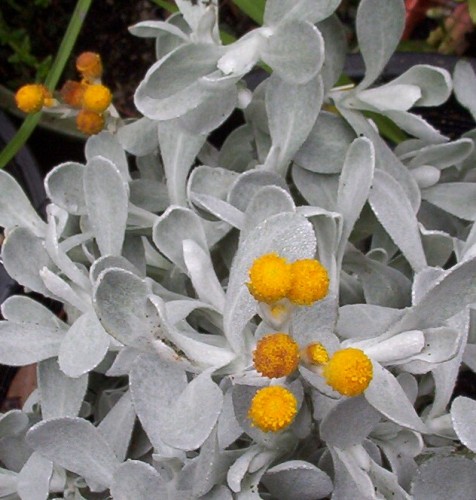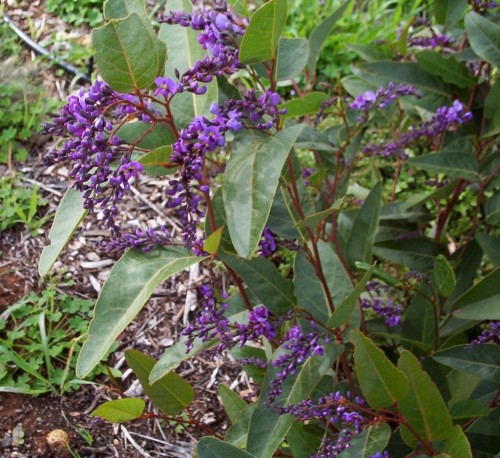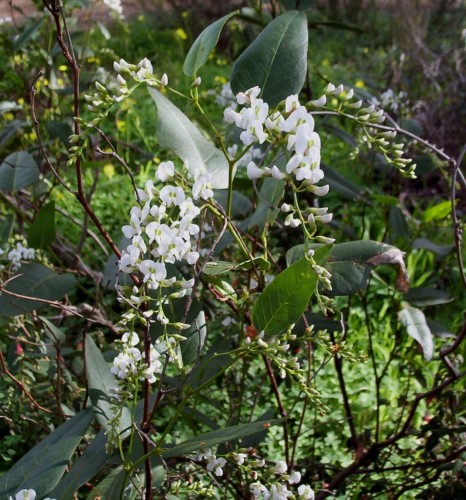Chrysocephalum apiculatum
These plants need tidying up when new growth begins at the base of the plants.
My favourites have grey/green leaves and one has distinctly grey leaves. Of course the flowers look great against these leaves. The mallee form is a small clumping plant, with smaller flowers and green leaves. It is a dainty plant compared to the brashness of the others.
Hardenbergia violacea (Native Wisteria)
Top 5 Drought Tolerant Australian Native Plants…
…in five categories.
I decided that I would set 5 simple categories of plants and list five species within those categories.
Drought Tolerance is relative and what I have chosen are plants that are drought tolerant in an area with less than 14 inches (350mm) of annual rainfall (winter wet). Other issues which can make a difference are severe frosts, drying winds, the amount of rainfall the previous winter and whether mulch is used or the amount of shade available.
Ground Covering Plants
- Hardenbergia violacea (purple, pink, white) Native wisteria (Also a climbing plant)
- Chrysocephalum apiculatum (suckering plant with small yellow pom pom heads.
- Kennedia prostrata (Running Postman – because of red and black flowers and very flat form.
- Eremophila glabra (Emu Bush) (various prostrate forms, different colours)
- Myoporum parvifolium vigorous flat ground cover with white flowers
Small Shrubs to 1 metre
- Eremophila macdonnellii (large deep purple flowers)
- Eremophila macdonnellii (large deep purple flowers)
- Prostanthera magnifica (Mint Bush with very large flowers)
- Thryptomene saxicola (Pink or white small flowers)
- Grevillea lavandulacea
Tufted Plants
- Dianella revoluta (Purple nodding flowers and purple berries)
- Orthrosanthos multiflorus (Native Iris) (Mauve Blue flowers)
- Wahlenbergia communis (native Bluebell) (perrenial with blue star flowers.)
- Calostemma purpureum (Native Lily) (Pink-red flowers)
- Anigozanthos flavidus (Kangaroo paw)
Shrubs to 3 metres
- Acacia drummondii (yellow rods)
- Banksia ornata
- Melaleuca wilsonii (red bottle brush flowers)
- Chamelaucium uncinatum (various colour forms)
- Hakea leucoptera (Honey Suckle) (Prickly bush with cream flowers)
Trees
- Eucalyptus campaspe
- Melia azedarach (White Cedar)
- Callistemon viminalis (Weeping Bottlebrush)
- Agonis flexuosa (Native Willow)
- Melaleuca lanceolata (White bottle brush flowers)
These are some of my favourite plants and ones that I know to be successful. These are all growing in garden conditions. Growing the same plants in the field is another matter altogether and another list would need to be generated.
I haven’t been able to get to my blog for several weeks and this opportunity to participate in the latest Problogger writing project provided me with the push to get going again.


